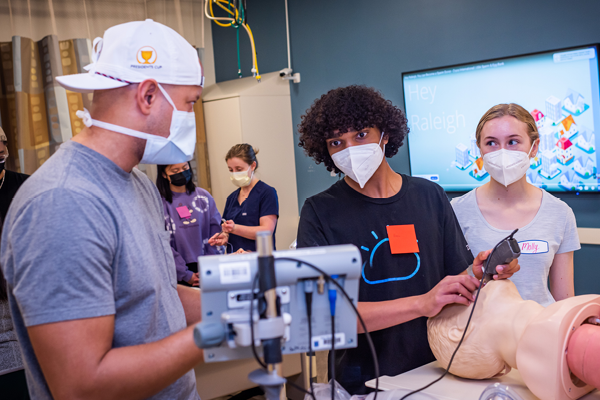Ensuring the health and safety of students is a fundamental responsibility of educational institutions. Access to quality medical care within schools not only addresses immediate health concerns but also promotes overall well-being and academic success. With the increasing prevalence of health issues among students, such as mental health challenges, chronic illnesses, and infectious diseases, schools must prioritize medical care as an integral part of their operations.
This article explores the significance of medical care for students, the types of services that should be provided, and the best practices for creating a safe and healthy school environment.
The Role of School Health Services

- Comprehensive Health Services:
- Schools should provide a range of health services, including routine check-ups, immunizations, and screenings for vision, hearing, and dental health. Access to these services ensures that health issues are identified and addressed early, minimizing their impact on students’ academic performance.
- Emergency Care:
- Having trained medical personnel on-site is crucial for responding to emergencies. Schools should have protocols in place for handling medical emergencies, including first aid and the management of chronic conditions such as asthma or diabetes.
- Mental Health Support:
- Mental health is a vital aspect of overall well-being. Schools should offer counseling services and mental health resources to support students facing emotional or psychological challenges. Recent trends emphasize the importance of integrating mental health education into the school curriculum.
- Health Education:
- Educating students about health and wellness is essential for promoting healthy behaviors. Schools should implement health education programs that cover topics such as nutrition, physical activity, substance abuse prevention, and sexual health.
Preventive Care and Wellness Programs
- Immunization Programs:
- Schools play a critical role in promoting vaccination among students. Immunization programs help protect against preventable diseases and contribute to overall public health. Schools should collaborate with local health agencies to facilitate vaccination drives.
- Nutrition and Physical Activity:
- Promoting healthy eating and regular physical activity is essential for students’ growth and development. Schools should provide nutritious meal options and encourage physical activity through sports programs and active recess.
- Health Screenings:
- Regular health screenings can help identify potential health issues early. Schools should conduct screenings for common health concerns, such as obesity, vision problems, and mental health issues, providing referrals to appropriate healthcare providers when needed.
- Wellness Initiatives:
- Implementing wellness initiatives, such as stress management programs and mindfulness activities, can enhance students’ overall well-being. Schools should create environments that support healthy lifestyles and encourage students to prioritize their health.
Collaboration with Healthcare Providers
- Partnerships with Local Health Agencies:
- Schools should establish partnerships with local healthcare providers and organizations to enhance the availability of medical services. Collaborating with community health resources can help schools access additional support and expertise.
- Telehealth Services:
- The integration of telehealth services in schools can provide students with convenient access to medical consultations. This approach is particularly beneficial for addressing non-emergency health concerns and mental health support.
- Training for School Staff:
- Training school staff on health and safety protocols is essential for maintaining a safe environment. Staff should be equipped with the knowledge to recognize health issues, respond to emergencies, and promote health education among students.
Creating a Safe and Healthy School Environment
- Health Policies and Procedures:
- Schools should develop clear health policies and procedures that outline protocols for managing health issues, emergencies, and the administration of medications. These policies should be communicated to students, parents, and staff.
- Safe Facilities:
- Ensuring that school facilities are safe and conducive to health is vital. Schools should maintain clean environments, provide adequate ventilation, and ensure that facilities are accessible to all students.
- Parental Involvement:
- Engaging parents in health initiatives can enhance the effectiveness of school health programs. Schools should encourage parental involvement in health education, wellness events, and volunteer opportunities.
Conclusion: Prioritizing Student Health and Safety
Medical care for students is a critical component of ensuring their health and safety in schools. By providing comprehensive health services, promoting preventive care, and creating a supportive environment, schools can significantly impact students’ well-being and academic success.
As we navigate an increasingly complex health landscape, it is essential for schools to prioritize medical care as part of their mission. By fostering collaboration with healthcare providers, engaging parents, and implementing effective inca hospital policies, schools can create safe and healthy learning environments that empower students to thrive.
In summary, ensuring the health and safety of students through effective medical care is vital for their overall development. By prioritizing health services and wellness initiatives, schools can play a pivotal role in shaping a healthier future for their students.
Read Also About School events are an important part of the educational experience, providing opportunities for students to connect, learn, and celebrate their achievements outside of the classroom.



